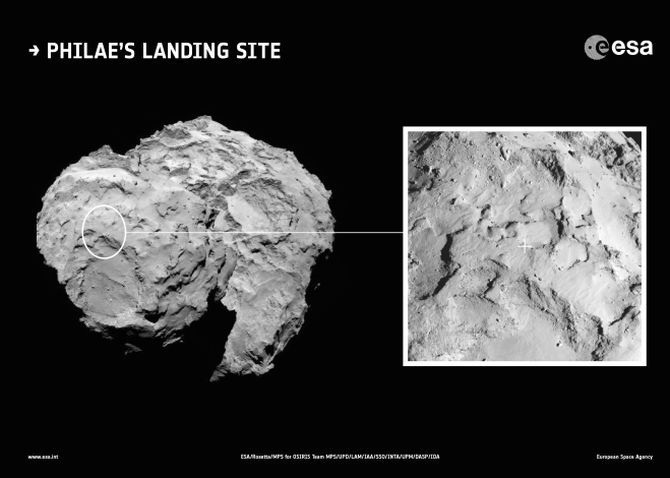
The first mission in history to rendezvous with a comet was a success after the Philae lander separated from the Rosetta orbiter and achieved a soft landing on comet 67P/Churyumov-Gerasimenko.
The Rosetta mission was led by the European Space Agency, with contributions from its member states and NASA.
Shortly after landing was confirmed, the probe tweeted: "Touchdown! My new address: 67P!" Later, it tweeted again: "I'm on the surface but my harpoons did not fire."

It took the Philae lander 10 years to reach a point where it could be sent toward Comet 67P/Churyumov-Gerasimenko capping a 6.4 billion-kilometre journey.
Scientists said the probe would help them learn a lot more about the composition of comets and how they react when they get close to the Sun.
The descent to the surface of Comet 67P/Churyumov-Gerasimenko took around 7 hours, during which the lander took measurements of the environment around the comet.
The landing on the comet marks the highlight of the decade-long Rosetta mission to study comets and the origins of these celestial bodies.

ESA said it received a signal from the 100-kilogram Philae lander, the size of a domestic washing machine, after it touched down on the icy, dusty surface of comet 67P.
The landing site, named Agilkia and located on the head of the bizarre double-lobed object, was chosen just 6 weeks after arrival based on images and data collected at distances of 30-100 km from the comet. The first images soon revealed the comet as a world littered with boulders, towering cliffs and daunting precipices and pits, with jets of gas and dust streaming from the surface.
The Indian Spaces Research Organisation's Mars Orbiter had the opportunity to witness the Comet Siding Spring approach Mars on October 19, for which the spacecraft repositioned itself for its safety. After the comet passed by, @MarsOrbiter tweeted, "Phew! Experience of a lifetime. Watched the MarsComet SidingSpring whizzing past the planet. I’m in my orbit, safe and sound."

The Mars Colour Camera on board ISRO's Mars Orbiter has captured the Coma (top bright portion) of the comet partly, as it approached MOM during last 40 minutes of the imaging session before Mars-Comet close encounter, ISRO said in its social networking site along with the pictures.
After the Philae lander’s separation from the Rosetta orbiter, the descent to the surface of Comet took a tense 7 hours as both hurtled through space at 66,000 kph.
Using 21 different instruments, Rosetta and Philae will collect data.

"We definitely confirm that the lander is on the surface," said flight director Andrea Accomazzo.
Rosetta was launched in 2004 and arrived at Comet 67P/Churyumov-Gerasimenko on 6 August 2014.

Over the next 2.5 days, the lander will conduct its primary science mission. While Philae begins its close-up study of the comet, Rosetta must manoeuvre from its post-separation path back into an orbit around the comet, eventually returning to a 20 km orbit on 6 December.










